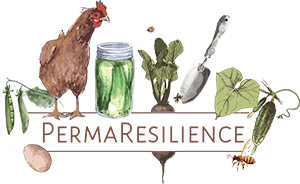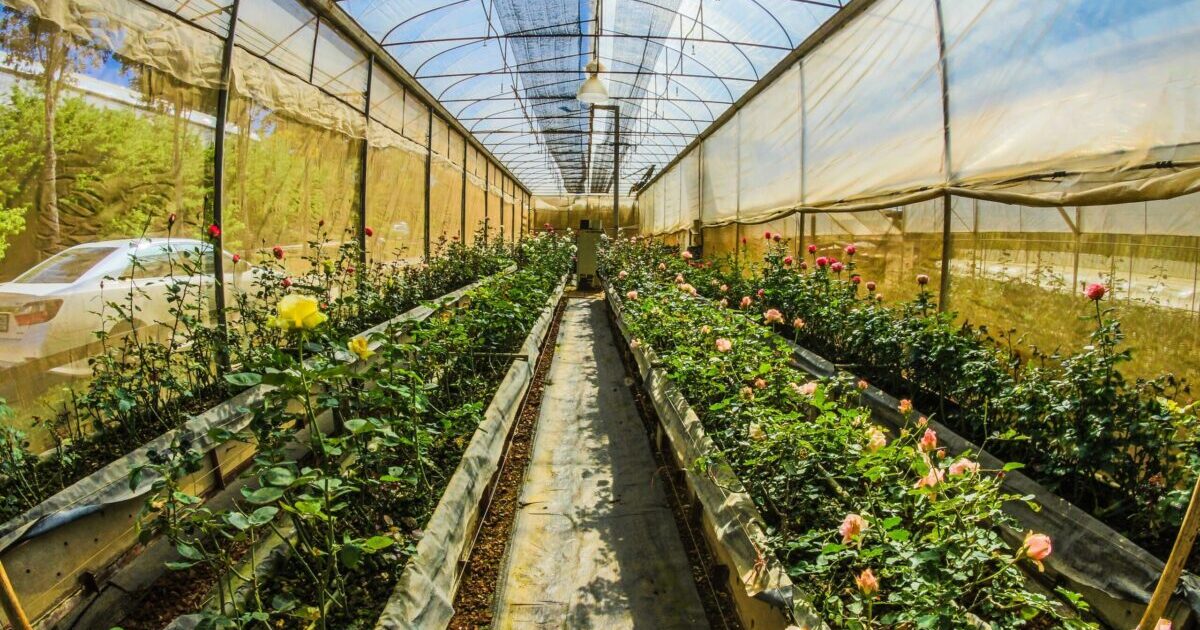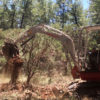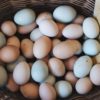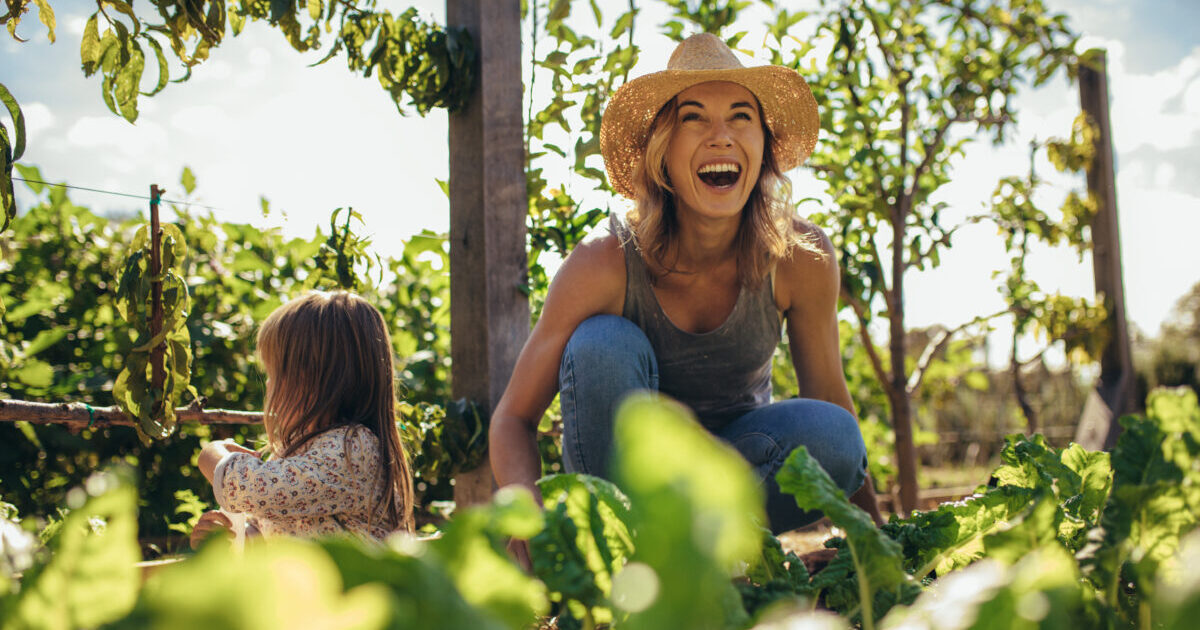Discover how using just the sun and barrels of barrels can passively heat and cool a greenhouse so that you can extend your growing season, or even grow veggies year-round. This is how to create an abundant harvest during hot summers or snowy winters.
Video Transcript:
Now you might not think that this weather is conducive to growing food, but some of the changes that we’ve made to our little mini hoop house have made a massive difference, and I’ve got some exciting updates that I want to share with you.
Hey everyone, Brett James here. This week, I’m turning this old high tunnel into a passive solar greenhouse. Now, I don’t fully know if this is going to work, so it’s going to kind of be, uh, one of those things where I hope my time and my money don’t go to waste. So stay tuned.
So last night, three to four inches of snow fell, and we got about another one to two feet coming in today and tonight. Let’s see how the greenhouse did.
So for us, we moved from the Sierra Nevada mountains in California, which was we’re on the fringe of zone eight, zone nine. Um, you know, reasonable growing season considering we were living in the mountains, to the high desert here, uh, just outside of the San Juan mountains right behind me here in Southern Colorado, and we’re on the fringe of maybe like a zone five and zone six. And this is bridging on, you know, more difficult to grow.
So for us, uh, here in February, it’s time to start thinking about getting seeds going, but we need to have a place where we can actually do that, uh, and the property that we purchased had an existing hoop house, a little tiny 20-footer that will be perfect for germinating seeds and getting us a head start in the growing season.
One of the challenges for us being in a cold climate here is that our last frost date can be a range of May to June, which really cuts down on our growing season from what we’re used to. So that’s why I want to utilize this hoop house here to get us at a much, much earlier start when it comes to getting seeds started and being able to grow seedlings up in pots before we can put them outside in the garden.
So when it comes to these hoop houses, a problem that pretty much everybody has, at least, you know, in their default form, which is just some metal tubes and some plastic over it, is that they actually don’t regulate temperature very well. So when it comes to the daytime, they get extremely warm, like right now.
The temperature in this greenhouse is probably about 80 degrees with the door open, maybe even a little more, and then outside it’s probably about 35 degrees. So in the daytime, they warm up really quickly and nicely, which is great, right? Almost too much. But you can control the excess heat with venting, and that’s easy to do.
The problem is that these hoop houses here that I can make a massive difference when it comes to regulating its temperatures so that way without energy or very little energy, I can essentially heat and cool this greenhouse in the cold, uh, cold nights that we have real quick.
If you’re liking the content here, the llama is asking you to consider liking the video because it’s a free way that you can support the channel. And if you want to see more of these in your YouTube feed, be sure to hit the subscribe and notification buttons as well.
All right, so there are two primary principles that I’m going to be applying to the hoop house retrofit project. The first is from passive solar design. So if we look at our, you know, our home behind us, you can see that the way that the eaves on the side of the house are placed, they’re allowing the sun to hit all the windows here on the southern side.
And that allows for the sun to go into the home, and there are brick, uh, brick floors and brick walls, and the sun heats up those bricks, which act as thermal mass and store the heat to keep the home warmer and require less energy to heat it.
And then in the summertime, as the sun gets higher up in the sky, those eaves shade the windows so that way the sun is not hitting the home, and the home stays cooler in the summer.
Now, similarly, I’m going to be using Reflectix material as an insulator to kind of do the same thing on the back side, so the north side of the hoop house wrapping the top side up until the point in which I’m going to cut the sun off in the summer.
But in the wintertime, the sun will be lower in the sky. See if we can get it somewhere there, right? The sun will be lower in the sky, and it will still be shining into the greenhouse, and the hoop house, and bouncing off the Reflectix and back into thermal mass inside the hoop house, hopefully heating it up much, much more in the winter time and keeping it much, much cooler in the summertime.
So, that’s part one. Now, part two is thermal mass, and like I kind of told you about in the house which has, you know, bricks in the floor to kind of hold in the heat. So then what I’ve got for the hoop house are 10 of these 55-gallon barrels, all of which I’ve painted black, and they’ll be filled with water and put inside the greenhouse as a thermal battery bank of sorts.
So basically, the sun will heat them up during the daytime. The water will heat itself up, and water is one of the best materials that you can use to store heat, much, much better than brick, soil, and so on. So the sun’s going to heat these barrels up during the day.
With 10 of them in there, that’s about 550 gallons of water to heat up and absorb the heat during the day, which will also help keep the greenhouse cooler. In other words, it’ll reduce the high temperatures that the greenhouse will be experiencing during the day because the barrels themselves are going to be absorbing the heat from inside the greenhouse.
And then these barrels, they’re going to slowly release the heat back into the hoop house during the night, hopefully keeping it significantly warmer, allowing us to be able to put this hoop house into use despite the fact that it’s February and really, really cold still. You can see I’ve already got one-half of it prepped.
Now, one of the things that I am doing is I am rolling out this black weed barrier right here on the floor. So what this is going to do is the blood, as you probably know, black absorbs heat.”
So, while the soil isn’t necessarily the best at holding heat, it’s certainly better than nothing. So, by laying the weed barrier on the ground, the sun’s gonna hit the weed barrier and heat the soil that we have here below the greenhouse, acting as a little bit of a thermal battery. And that, too, in addition to the rain barrels, is gonna help heat the greenhouse.
All right, so I’ve pretty consistently been monitoring the temperatures outside, where this sensor, the 42 degrees, is just a sensor that’s outside, and then the 65 degrees is a sensor that’s inside the greenhouse. And so, I’ve been monitoring this for about two weeks now, recording all the temperatures several times throughout the day to kind of see how different the greenhouse varies from the outside temperature.
Now, currently, the greenhouse is open and cooled down quite a bit, and typically, I would see that anywhere upwards of about 80 to 90. Ah, at the point in which this is reaching about 42 degrees, what I’ve noticed is the hoop house is significantly warmer during the day. The moment the sun starts to shine on it, it the temperature raises extensively, but during the night, the hoop house cools down and becomes colder than outside.
So, ultimately, I know that these principles work when it comes to home design or passive solar greenhouse design. However, this is just a hoop house, so my hope is, fingers crossed, that these principles will work well enough to make this usable, so I don’t have to tear it down and put in its place a passive solar greenhouse to be able to grow food, uh, here earlier on in the season. So let’s, let’s dive in.”
All right, so here’s the basic idea.
The northern side of the greenhouse is going to be lined with the 55-gallon barrels, and I kind of brought a couple of the barrels in here to start mocking it up so I can know how it’s all going to fit in here. But the barrels will be all in a row, lined up on the north side of the greenhouse here.
Then, I’m going to build the bench on top of it, and on that bench is where we’re going to germinate our seeds. On top of the bench, we’ll do the garden bed here on the southern side. We can either grow food in it or once the seedlings get too large to be on this side of the bench or we need more room to start more seeds, then we can move them over here and just let them continue to grow up on the southern side of the greenhouse.
So with all of that kind of mocked up now, I understand how the barrels are going to fit in here. I guess it’s time to get to work on building ourselves a bench on the backside.
All right, so I’ve got all 10 barrels in the greenhouse. These are 55-gallon barrels, and that’s a total of 550 gallons of water to act as a thermal battery. To, hopefully (fingers crossed), help cool and heat this hoop house. And in addition to having the barrels in place (uh, painted black, filled full of water), I also have the framing for the seed starting workbench in place as well.
Now, what I can already say is that I’ve noticed that the temperature in the greenhouse has probably dropped by 10 to 15 degrees. And what’s going on is the cool water that is in these barrels is absorbing the heat within the greenhouse, bringing the temperature down. And that’s the whole point behind these thermal battery banks – they help regulate and balance the temperature.
Not only do they help keep the hoop house warmer at night when it’s colder outside by radiating the heat out, but they also absorb the heat in the daytime as well. And so, for right now, it’s a good sign to see that they’ve made a significant temperature difference in this hoop house.
Now, I’m also not necessarily done with experimenting either because we’re going to be putting some insulation higher up on the backside of this greenhouse, which we’re going to be blocking out some of the sunlight at particular points in time in the year. You know, leveraging the idea of passive solar design to help cool the temperature in the greenhouse in the hottest part of the season.
Cool, so I got phase one of my hoop house build done. We got (I have) the thermal mass all installed, and then I have the potting bench all built on top of the wall of the rain barrels or the water barrels. And so we can have a nice place to do all of our starts over all of our seeds in here.
So, I decided I’m not going to do the second part of this video for this project, which was the first part was the thermal mass for retention, and the second part was incorporating some passive solar design into the hoop house. But I kind of got this tacked up here in place (you can see the Reflectix if I back up here right above here), and this is the idea that I’m gonna be implementing.
But I’m gonna hold off on that because I wanna see the results from the thermal mass alone and separate that out so I can understand the difference that each of these components is going to make to the hoop house.
Versus if I just did them both at the exact same time, I wouldn’t really know which one made the biggest difference. So, with that said, we got some interesting weather coming up, so I’m curious to start tracking the temperatures as it swings, the temperatures changes during the daytime and the nighttime, and get a sense to find out if this effort, time, and money that I put into this worth it. We’ll see.
So, last night, three to four inches of snow fell, and we got about another one to two feet coming in today and tonight. Let’s see how the greenhouse did.
So, let’s go check out the mini hoop house and see how it feels inside.
Oh, man! Wow!
All right, so as you can see, it’s snowing pretty reasonably already. The sun’s not really out; it’s behind the clouds. And then the green of the hoop house has a layer of snow on top of it, so it’s not like it’s getting heated by the sun at all. Outside, it’s, I think, 25, and in here, the ambient temperature in this general space is 35 degrees.
Now, I’ve also added the hoop house here an additional layer of heat collection and protection. So, above the bench that I built to do all of our seed starting, I put on the ribbon row covers that you would typically use outside with some of the little metal hoops.
And under here, in this space, it is an additional 10 degrees warmer. As we can see over here, I’m measuring the temperature with these electronic sensors that send the temperature to the units inside the house.
Now, these heat mats are not on, so the heat is radiating from these barrels up into this space here. And this space where the seeds are going to be started is 20 degrees warmer than it is outside currently. So, I would say that is a massive success, and I’m pretty excited about the few hundred dollars that I spent on the barrels, the wood for the bench, and the reflective insulation for the greenhouse. Totally worth it, and I’m excited to play with this on a larger scale and see what else we can do with this as well.
We’ll go into the second phase of this mini hoop house, which is further insulating it and adding some passive solar design to it. But as I said, I think I’m gonna hold out for that on another video because we’ve got enough content here already. [Music]
Now that we’ve seen that the greenhouse stays above freezing and even significantly warmer than that when the temperatures outside are in the single digits, we’re going to go ahead and start some seeds.
Okay, so we’ve had the thermal batteries, the water barrels, in the greenhouse now for about two weeks. It’s currently snowing, it’s 24 degrees Fahrenheit outside, and the temperature inside the greenhouse right now is 54 degrees. And underneath the ribbon here up on the seed bench, I’ve got something interesting to show you.
So just about a week ago today, we went ahead and started all of our spring seeds and we’ve got everything sprouting and looking really good to go. So yes, while we’re using a little bit of electricity to warm up the soil so we can germinate these seeds, the amount of energy used is relatively minimal relative to other options to try to heat the entire greenhouse, and I think it’s a good compromise between getting a head start on the garden, growing our own food, and still being sustainable.
